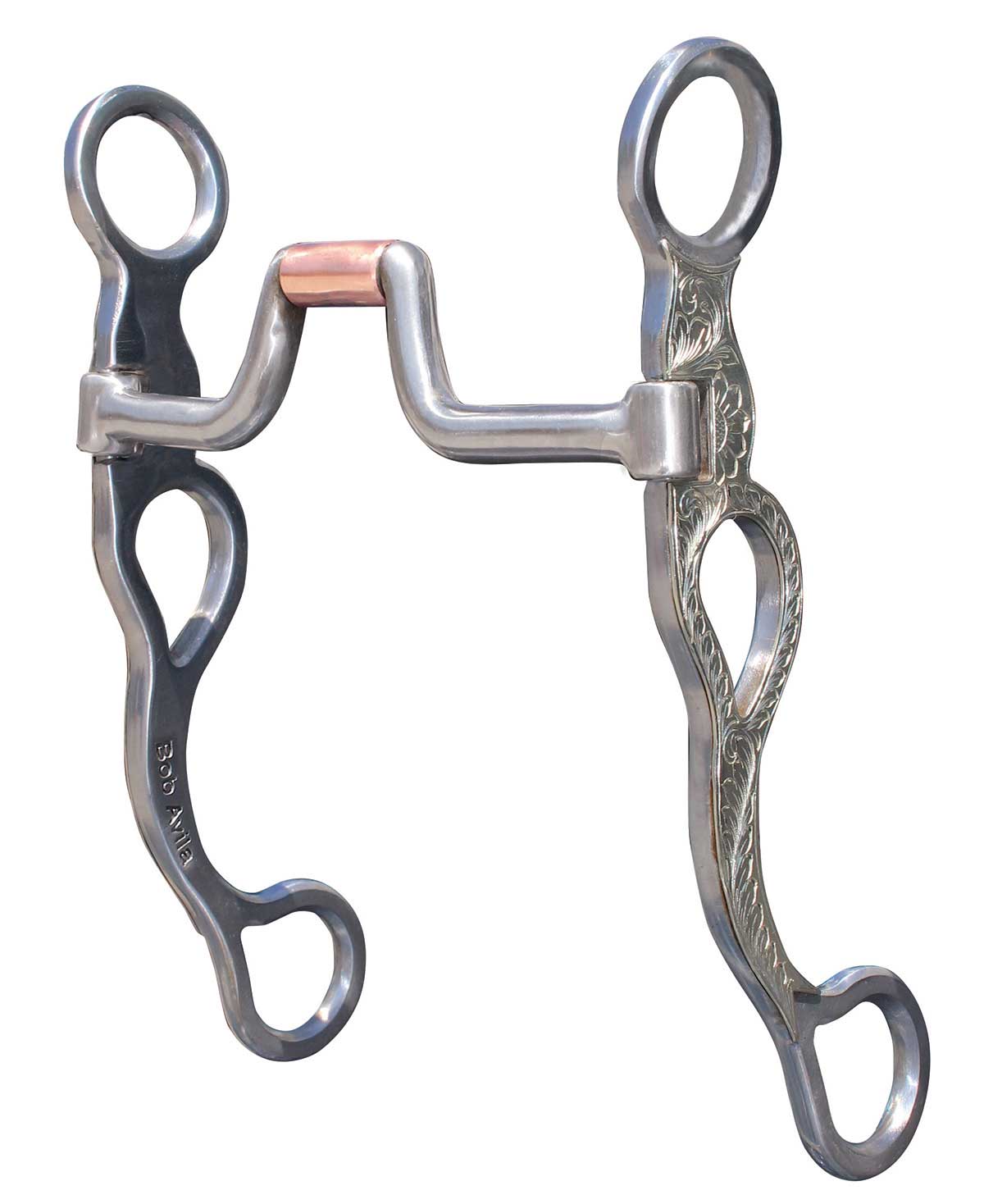People might wonder why I have so many bits. Every horse is different and has a different feel, so I actively seek the right bit for each horse. I’m willing to try anything (within reason) because it doesn’t matter if I like it or not; it matters if the horse likes the bit. The bits I grow to like are the bits my horses like best.
That said, I do have my go-to MVBs—most valuable bits. They’re straightforward, they work in almost all situations, they’re tried and true. No matter how many bits you have hanging in your tack room, these three bit types are essentials for any rider, from showman to trail rider. I’ll describe each bit and explain what I like about them and how I use them.

Bit #1: The Correctional
Description: The bit shown here has a 2-inch port, a 5-inch-wide mouthpiece, and 7-inch shanks. The copper on the bars helps keep your horse’s mouth moist, and the bit will rust with use, further increasing salivation. That’s a key for your horse’s comfort and thus his ability to respond to your cue. This correctional bit has four moving parts, and both shanks swivel.
What I like: This bit is 101-level basic. It’s one of those tack-room staples that’s in regular rotation in my program. In fact, I’ll bet that if I asked 100 horse people if they had a bit like this in their tack rooms, 95 of them would say yes. (And the other five will be ordering one after they read why this bit’s a favorite.) You can find this bit at varying price ranges anywhere from big-box chain stores to custom bitmakers’ booths at horse shows.
When I use it: I’ll use this bit on just about any horse—anything from a colt to a senior. And it’s useful in the arena and on the trail. I rely on it when transitioning a young horse from a ring snaffle to a leverage bit. It’s also helpful when I bring home a new horse so I can see where he is in his response to a leverage bit.

Bit #2: The Swivel Port
Description: A 1½-inch port, 5½-inch mouthpiece, and 7¾-inch cheek make for a mild bit that’s probably my second go-to of my shanked bits. Holding a shank in each hand, you can rotate one side of the mouthpiece a complete 360 degrees. You can find this type of bit with all different shanks, varying from fancy to plain and longer to shorter, but what matters is the way it cues your horse, which is why I like it.
What I like: This bit’s swivel action makes a cue as simple as can be, which is especially important when transitioning from a snaffle to a shanked bit. You can use a direct pull with this bit, and it mimics the pull your horse is familiar with from his snaffle-bit training.
When I use it: When I start a horse in a leverage bit, I prefer to ride with two hands as my horse gets used to the bit’s action in my hands and in his mouth. The longer shank on this bit slows the connection between my hands and my horse’s mouth, which allows clearer communication to start. A shorter-shanked bit can have a faster pull, which isn’t what I’m after when I’m moving from a snaffle to a shanked bit.


Bit #3: The Snaffle
Description: I’m a ring-snaffle guy; my friend (and champion cow horse trainer) Teddy Robinson swears by his D-ring snaffles. The choice comes down to personal preference. Both snaffles shown here have 5-inch mouthpieces and 3½-inch rings. They each have copper in the mouthpiece to encourage salivation and a soft feel. The only difference is one has a flat connection to the mouthpiece and one is a complete ring. Your choice will be based on what feels best in your hand and what your horse responds to.
What I like: A quality snaffle is worth its weight in gold. This is the workhorse bit that plays a role in every horse’s training, from teaching a colt to respond to pressure when he’s first in training to progressing in his competitive career to shanked bits.
When I use it: Snaffles are for starting colts, of course, but they play a role throughout each of my horses’ careers. Anytime I feel like there’s a hole or something that wasn’t taught correctly in a horse’s early training, I go back to a snaffle to get back to basics. I should be able to do anything I might ask of a horse in a snaffle bit. A leverage bit won’t fix anything I’ve missed training while my horse was in a snaffle.
Bob Avila, Temecula, California, is an AQHA world champion, three-time NRCHA Snaffle Bit Futurity winner, NRHA Futurity champ, and two-time World’s Greatest Horseman. He’s been named the AQHA Professional Horseman of the Year. Learn more at bobavila.net.






